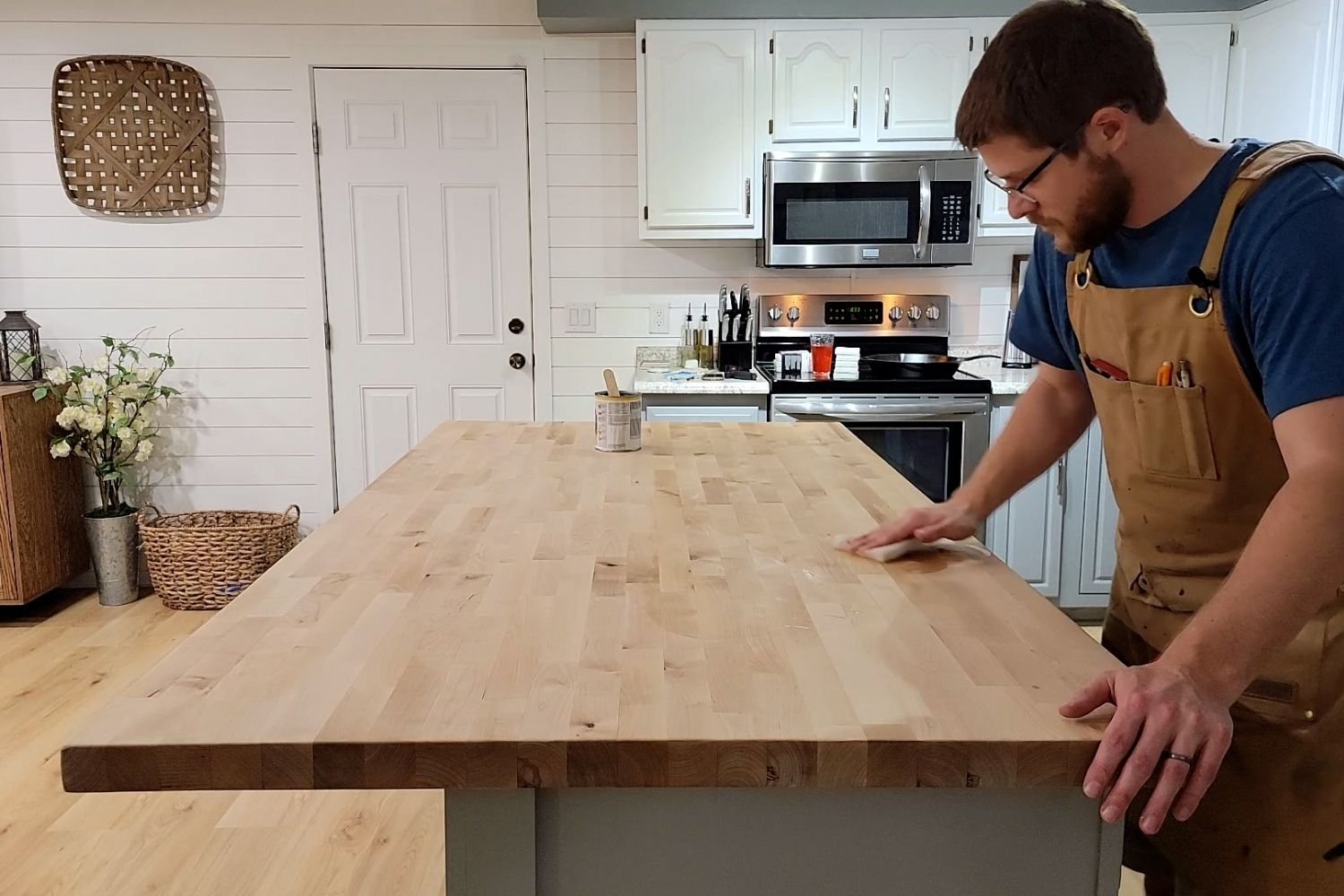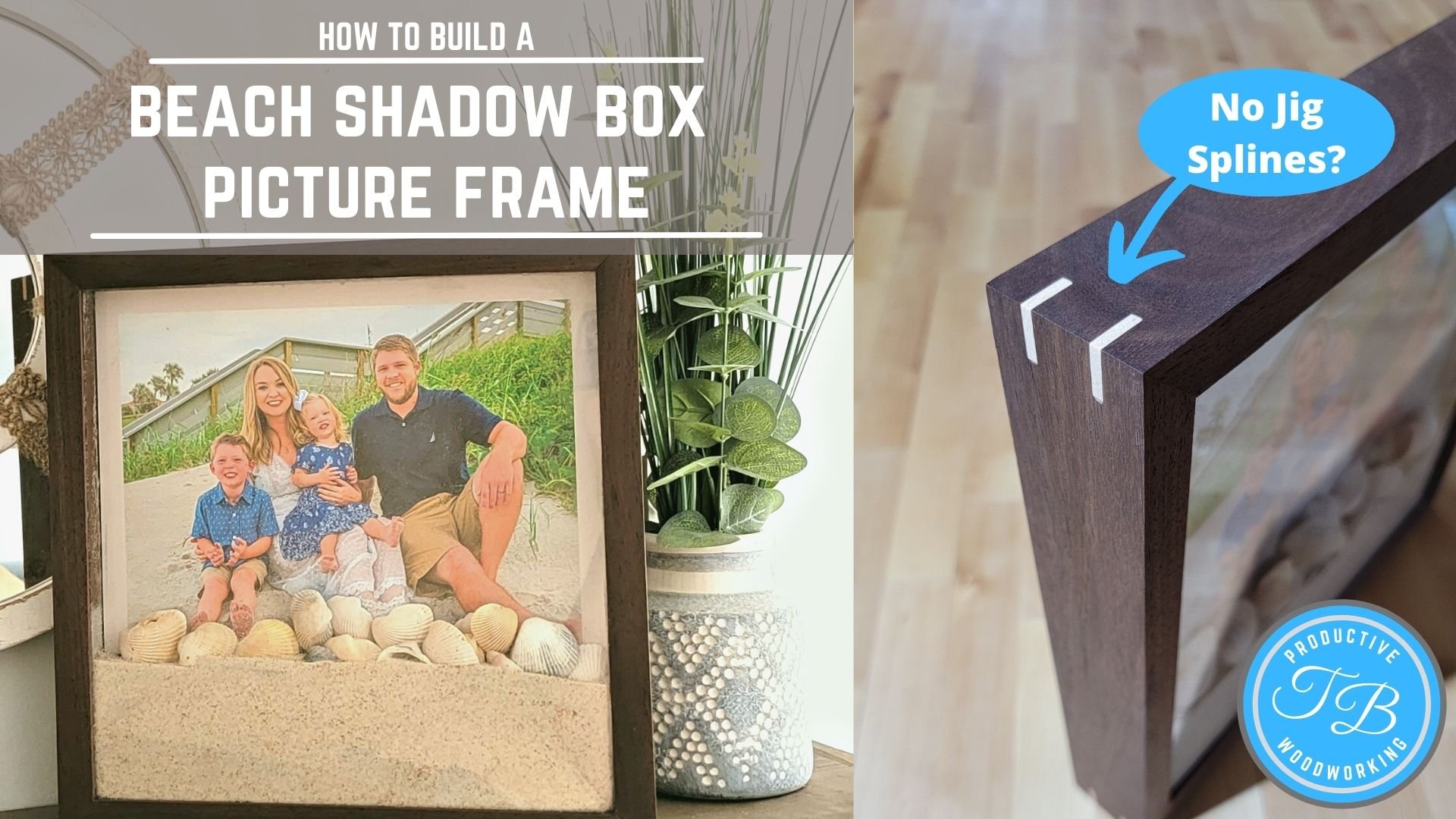Review - Festool Edge Sanding Guide
Personal Experience
I have been using the Festool edge sanding guide for over a year with my ETS 125 sander on numerous projects. Before I purchased the edge sanding guide, I would freehand sanding all the edges and bevels and inevitably round over corners or edges. I specifically purchase the Festool edge sanding guide to go along with my ETS 125 when I built our kitchen table and needed to sand 45-degree chamfers. This may seem like an unnecessary accessory but if you are looking for crisp edges and value perfection in your finishing the edge sanding guide is invaluable. This is my go-to accessory when finish sanding a project and takes all guesswork or worry out of sanding edges or bevels.
Pros
Adjustable Angles
Soft & Hard Settings
CONS
Expensive
Changing Sanding Disks
Only Compatible with ETS 125
Affiliate links are used on this page. See my disclosure page for info on affiliate programs. The links do not cost anything extra to you! I receive a small percentage from the businesses you purchase from which help support creating content and reviews like this one!
Specifications
ETS 125 REQ-Plus
Model Compatibility: ETS 125 REQ & ETSC 125
Edge Size: 3/16” to 2 3/8” (5-60mm)
Angle Range: 43 to 92 degrees
What’s Included
When you purchase the Festool edge sanding guide you receive all that you need to perfectly sand edges except for the sander itself. The edge sanding guide comes with two different bases, one a plastic base and the other a hook-and-loop base. The hook-and-loop base also include a velour cover to prevent any marring or scratches to your workpiece. You also receive a hex key to quickly attach or remove the edge sanding guide from your sander.
Assembly
The Festool edge sanding guide does not require extensive assembly or contain complicated parts. The guide is comprised of three parts with the main two pieces securing together around your sander with two hex bolts. The guide can be installed easily on your sander and pairs with existing recesses on your sander. The only other part in the assembly is attaching either the plastic base or hook-and-loop which quickly snap into place. I personally did not have any issues attaching it to my ETS 125 sander and do not see it as a pain to take on and off.
Features
The main feature of the edge sanding guide is the fact that you can precisely set your desired angle to lock in your sander. The guide is adjustable from 43 to 92 degrees and locks in with an easy-to-use thumbscrew. The setting of the angle can be slightly tricky, and it moves freely when the thumbscrew is loosened, but it has not impaired my ability to set the correct angle. Another feature of the edge sanding guide is the ability to switch between hard and soft modes with a simple toggle clamp. The hard setting locks in the angle set with the thumbscrew whereas the soft setting allows the sander to adapt to the workpiece to a certain extent. This is helpful you have a more natural edge you looking to sand or if you are not comfortable with setting the angle set perfectly. The edge sander also comes with two bases which can be swapped out of specific causes. The standard base is simply rigid plastic, and the other base is hook-and-loop with a velour cover to prevent any marring or damage to your surface. I mainly use the velour cover since much of my sanding comes at the finishing stage and I want to prevent any damage to my workpiece. The velour base does its job well and I have never scratched the top of my project when using the edge sanding guide from Festool.
Performance
Overall, I have been extremely happy with the performance of the Festool edge sanding guide. The setup is easy and once the angle is set, I have not experienced any movement or need to readjust. The edge guide performs as you would expect, and you can quickly and perfectly sand any angle. The edge guide completely prevents you from tilting or rounding over your corners or edges and works flawlessly. I also found that when you want to easily round over corners you can use the edge guide to do this while also keeping the edge 90 degrees to the top of the workpiece. In comparison to hand sanding edges the edge sanding guide by far produces the best results.
Warranty & Support
When you purchase the Festool Edge Sanding Guide it comes with a comprehensive warranty. First you receive a one-month money back guarantee with the ability to exchange the tool or return it entirely. You also have a three-year comprehensive warranty that also includes wear and tear. Festool also guarantees that once your tool is out of the warranty period, they will have parts available to fix your tool for 10 years. If the parts are not available, they will provide you with a new tool free of charge. So, in this case, I highly doubt you will need to service your edge sanding guide but knowing that if a base breaks or you accidently drop it, your covered and can find parts.
Value & Quality
The value of the Festool edge sanding guide is debatable and depends on your goals. Obviously, you can sand edges with a sanding block by hand and get comparable results, but the value of this accessory lies in the speed. The speed to attach this to your sander and quickly sand edges in comparison to manually sand is night and day. I also value the edge sanding guide for its ability to perfectly sand edges and eliminates the risk of screwing up a project in the final sanding steps. This could be invaluable if your building projects for clients or high-priced items you cannot afford to replace or start over. The quality of the Festool edge sanding guide is in line with all the Festool products. In my opinion, the three-year warranty that covers wear and tear speaks to the confidence that Festool has in the quality of their edge sanding guide.
Requirements
One of the downsides of the Festool edge sanding guide is the requirement that you need to have one of two models of Festool Sanders. The edge sanding guide will only work for either the Festool ETS 125 REQ or the Festool ETSC 125 sander. If you do not have one of those sanders, I would highly recommend it if you are looking for a great finish sander.
Most Asked Questions
Does this come with a case or systainer?
The edge sanding guide does not come with a case or systainer but, you can purchase an empty systainer if you need one.
What models will the Festool edge sanding guide fit?
This edge sander will only work for the Festool ETS 125 REQ or the Festool ETSC 125 sanders.
Should You Buy It……
Yes if……
If you already have either the Festool ETS 125 REQ or the ETSC 125 and need to sand precise bevels, chamfers or perfectly 90-degree edges with professional results
No if……
If you are on a budget or if you do not already have a compatible Festool Sander. The edge sanding guide is a nice accessory but is not required, you can get comparable results by hand sanding or an alternative like the WEN Oscillating Belt and Spindle Sander.
Alternatives
While the price point on the Festool edge sanding guide may seem steep the alternatives are significantly higher. To get the same level of functionality you would need to look at a standalone machine. The WEN or Triton oscillating belt and spindle sanders which is almost double the price but has additional functionality of a spindle sander. I personally have the Bauer version from Harbor Freight which is identical and works very well and is a worthwhile investment. You could also utilize the Rikon belt and disk sander in the same capacity. If you are looking for a more industrial use and consistently need to sand edges on cabinet doors or will be using this daily the best tool for the job is an industrial edge sander like the one from Grizzly.
Even though I receive compensation for posts or advertisements, I will always give honest opinions, findings, beliefs, and experiences in this review. The opinions and views expressed in this review are purely my own. Any product claim, statistic, quote or other representation about a product or service should be verified with the manufacturer, provider or party in question.
If you have any questions, comment below.
Let’s talk about it!


















